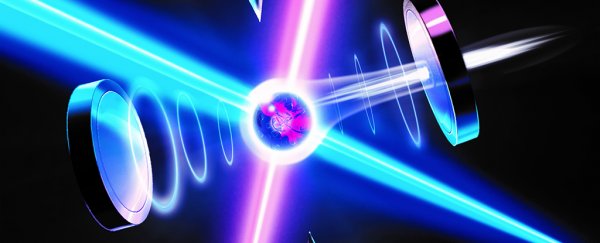One of the key challenges of getting quantum computing working in a practical and useful way is to do with temperature – being able to put together a machine that doesn't need ultra-low, laboratory-maintained temperatures to stay stable enough to operate.
Now scientists have found a new technique to get qubits, the basic building blocks of quantum computing, working at room temperature. That means we're a significant step closer to quantum computing for the masses.
While most qubits to date operate on superconducting materials or as single atoms, here the team explored the use of defects in silicon carbide (SiC) to hold qubits instead – a simpler and more cost-effective way of getting qubits running as required.
Although SiC has been explored as a qubit-holding material before, the problem has been in getting these qubits stable enough to use. The new research identifies the structural tweaks needed to make the formula work.
"To create a qubit, a point defect in a crystal lattice is being excited using lasers, and when a photon is emitted, this defect begins to luminesce," says physicist Igor Abrikosov, from Linköping University in Sweden.
"It was previously proved that six peaks are observed in the luminescence of SiC, named from PL1 to PL6, respectively. We found out that this is due to a specific defect, where a single displaced atomic layer, called a stacking fault, appears near two vacant positions in the lattice."
Atom-level modifications like this have been tried before: last year researchers were able to get stable qubits working in diamond defects at room temperature, by replacing one carbon atom with one nitrogen atom.
Silicon carbide is more abundant and less expensive than diamond, which is partly what makes the new research so promising. However, the team has only modelled this idea so far – actual experiments, perhaps using chemical vapor deposition, are still to come.
While the researchers admit that challenges remain, they also report that recent developments in 3D engineering make the prospect of this sort of defect construction more viable than ever before. It's going to be a long road, but we're getting there.
Unlike the binary 1s and 0s of classical computing bits, qubits can be in multiple states at once, exponentially increasing the potential computing power, and opening up the possibility of tackling problems that even today's supercomputers are stumped by.
The findings of this study are going to be useful long before quantum computing hits the mainstream though – they can also be applied to the development of delicate scientific instruments including magnetometers and biosensors.
The research has been published in Nature Communications.
